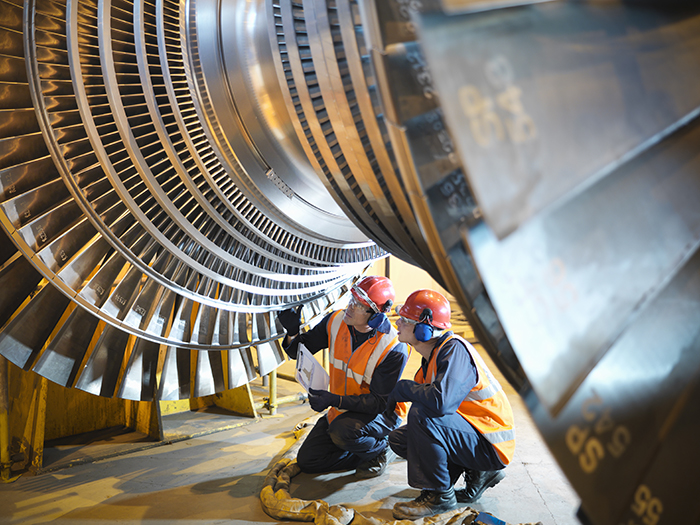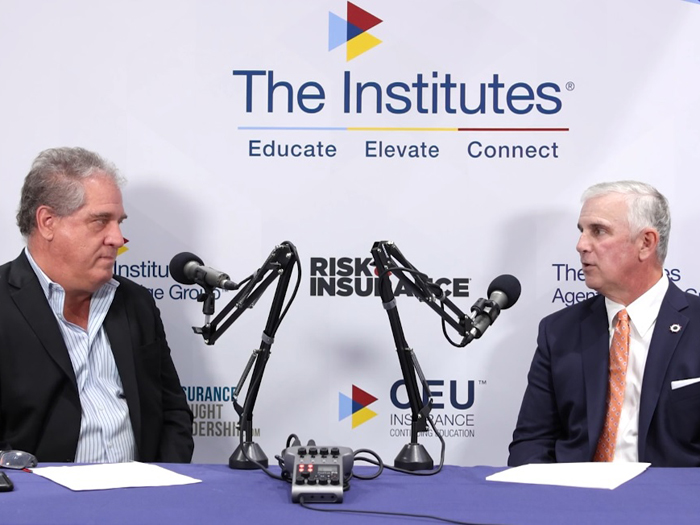Why Wearables Could Revolutionize Worker Safety
Over the past 30 years, industrial operations have grown increasingly sophisticated, driven by productivity.
Warehouses store thousands of items to be picked, control centers collect data from machines to optimize operations, and automation allows for unprecedented efficiencies.
Despite the ingenuity in industrial operations, however, the technology that keeps the industrial workforce safe hasn’t changed in decades.
Eye protection became prominent in the 1910s, the hard hat in the 30s, and the safety vest in the 60s. So as productivity has increased, safety technology has not kept pace.
Now, a U.S. worker is injured on the job every seven seconds, per data from the National Safety Council. Every one of those injuries affects someone’s personal life and their ability to provide for themselves and their families.
Companies are beginning to move beyond the “passive” safety efforts of the 20th century, utilizing innovations like sensors and connectivity, to develop new technology that helps keep workers safe.
Examples include exoskeletons that relieve the load on workers’ joints while they’re performing manufacturing operations; hard hats embedded with communications equipment and a GPS for lone workers; and wearables that help reduce musculoskeletal injuries developed on the job.
Wearables and Worker Safety
Wearable tech provides multiple workplace safety benefits: It can help prevent injuries by changing worker behavior, and it can help uncover the cause of workplace risks so management can focus attention, in real time, on areas that might lead to injury.
Ergonomic wearables can detect whenever a worker performs an unsafe movement with their body, such as an improper bend, twist or overreach, and provides an alert via a vibration.
This helps to heighten a workers’ awareness of high-risk movements performed on the job. When provided with this real time coaching system, employees begin to self-correct and change their behavior, reducing the amount of times they perform movements that can ultimately lead to injury.
Wearables also collect data. Every time a high-risk movement is detected, that data is sent to a dashboard so management can identify employees who might benefit from additional on-the-job ergonomic coaching (those with the highest numbers of unsafe movements), or which job type is driving the most risk. Managers can then design interventions around that data to further reduce or eliminate risks.
The reduction of high-risk movements among a workforce serves as a leading indicator that injuries will go down, because unsafe body mechanics often lead to injury.
Overtime, injury rates start to decrease, following the reduction in high-risk movements. And because safety wearables are reducing sprain-and-strain injuries — which can take a long time to recover from — there’s also a reduction in lost or modified work days.
Tech-Enabled Workers’ Compensation
Insurance carriers are starting to look at a new version of workers’ comp that takes advantage of innovations in safety technology, like wearables.
Traditionally, workers’ comp insurance has been transactional — an injury occurs, it leads to a claim, and the carrier manages and pays for that claim. This process hasn’t changed in decades.
What’s emerging now is a tech-driven workers’ comp policy that is preventative. The carrier provides the policyholder with safety tech that helps reduce injuries; this leads to less claims, and ultimately to less premium for the policyholder.
Additionally, data collected from the tech enables better claims prediction, as well as advanced underwriting and risk evaluation. It shifts the entire process from a transactional transfer of risk to one of preventative risk management.
As carriers evolve to offer predictive, tech-driven risk management, they should be able to provide companies with safety tech at no extra cost. In a typical traditional workers’ comp policy, most of the premium goes to losses. For every dollar of premium, about 60–70% of it is spent on claims or legal costs associated with claims.
The economic incentive of safety technology, however, is such that the reduction in claims should cover the cost of the technology and still allow for a profit.
Furthermore, by including safety tech such as wearables in workers’ comp policies, carriers are providing middle market companies access to the benefits of reduced injuries and increased savings that, until now, had only been available to large Fortune 500 companies..
The Future of Insurance
Tech-driven, preventative risk management is the future of workers’ comp insurance, as it benefits all stakeholders in the ecosystem: policyholders, frontline workers, insurance carriers and even brokers.
When policyholders receive wearable safety tech and implement it correctly, their claims will go down. This results in lower premiums and fewer lost work days.
Right now, when a worker gets hurt on the job, it’s very hard to replace them due to labor shortages. With fewer injuries, policyholders don’t have to burden their existing workforce with overtime, or bring in temps, or try to hire new workers — all of which could actually cause additional injuries.
For the frontline workers themselves, the technology helps them to reduce injuries, which means they feel better and can lead a better life. Employees also feel like their employer cares about their safety and wellbeing when provided with tech to keep them safe on the job.
When insurance carriers provide technology that lowers claims, their policies can be more profitable. They can also collect data that allows for enhanced underwriting and improved risk modeling.
Carriers can better understand the specific risk of a policyholder and better predict future claims so that they can offer the best possible pricing.
Finally, tech-enabled workers’ comp offers brokers a new opportunity to grow their business with a product that’s entirely different from what has existed until now.
They become better risk consultants, helping to guide policyholders in making informed, data-driven decisions around risk mitigation. Brokers can also create a more meaningful customer experience with more opportunities to connect directly and frequently, not just when customers are paying a bill or making a claim.
For all of these reasons, wearable tech appears to be not only reinventing workers’ comp, it’s also providing a pathway to reimagine all types of commercial insurance where there is technology available to help reduce claims. &










